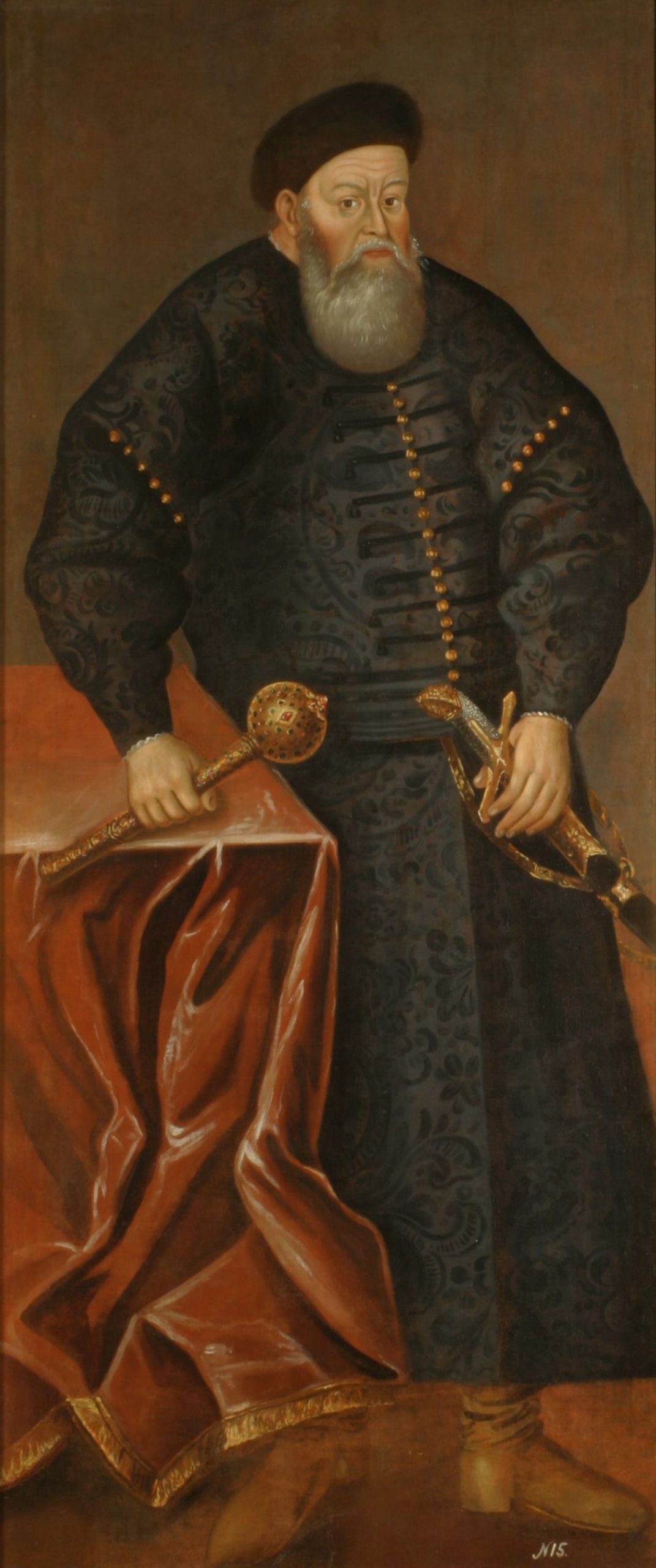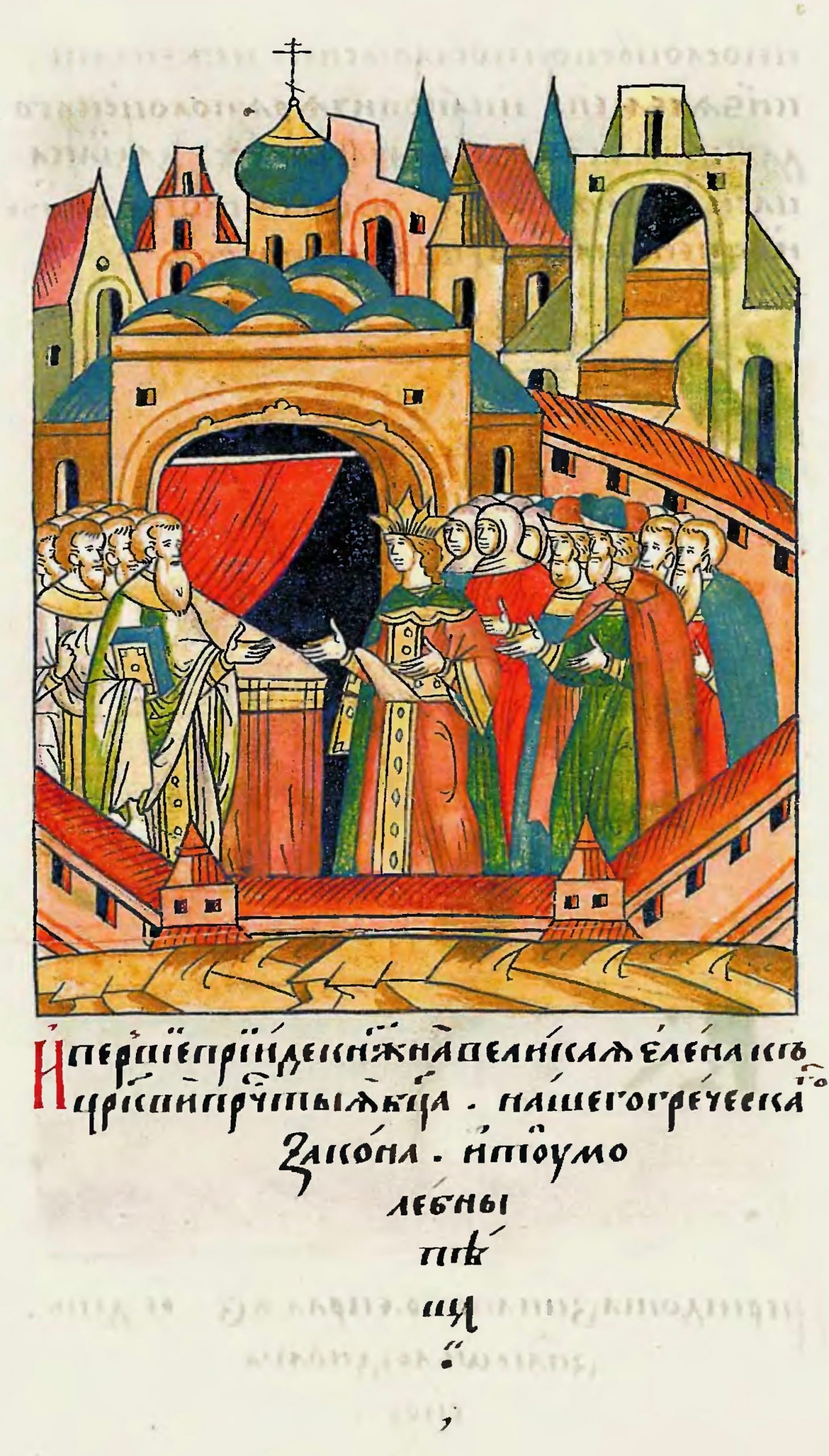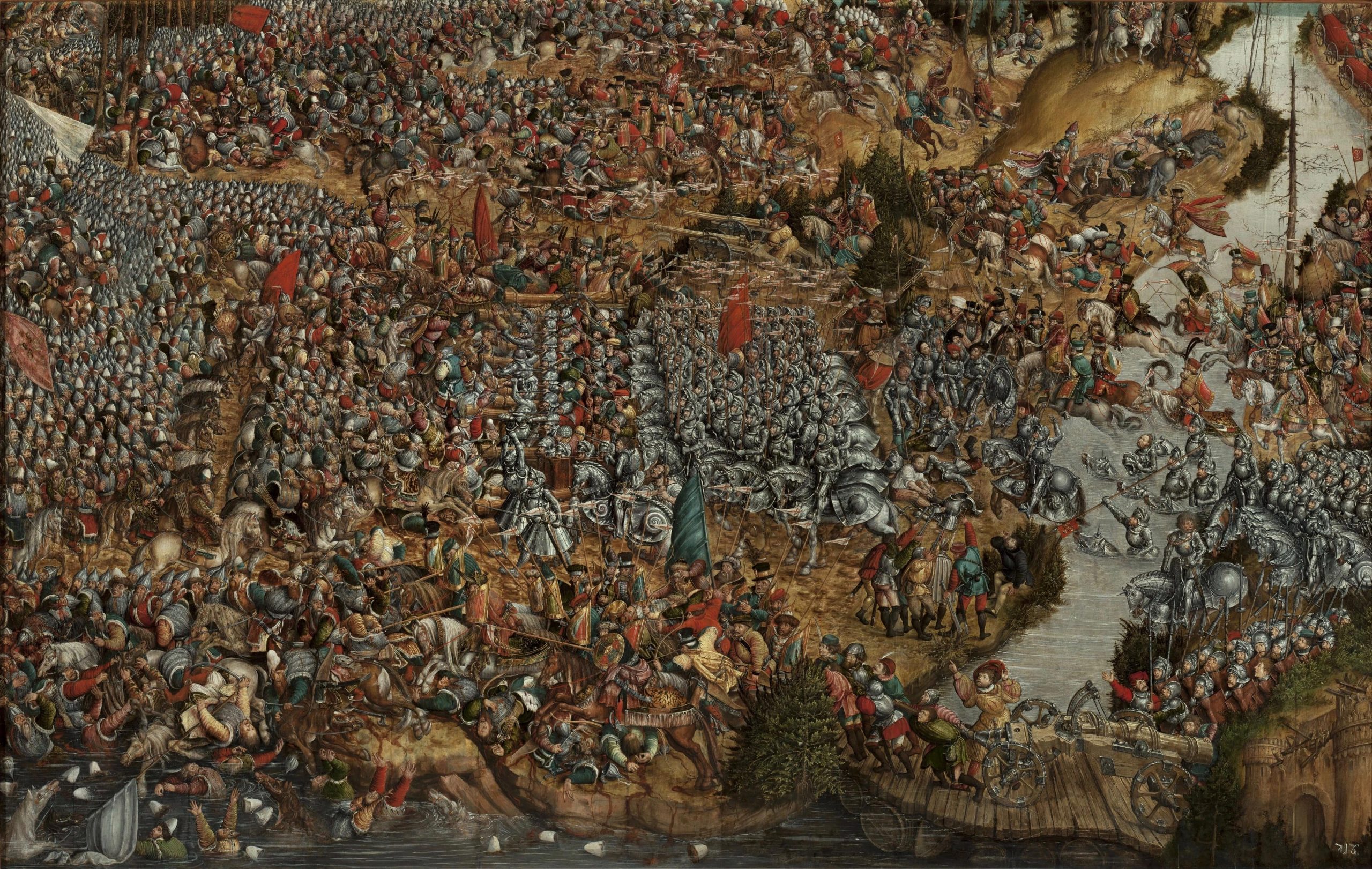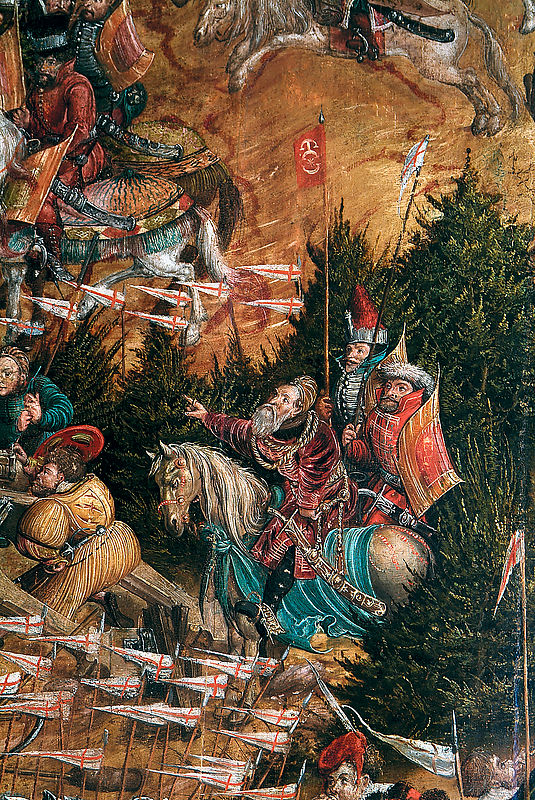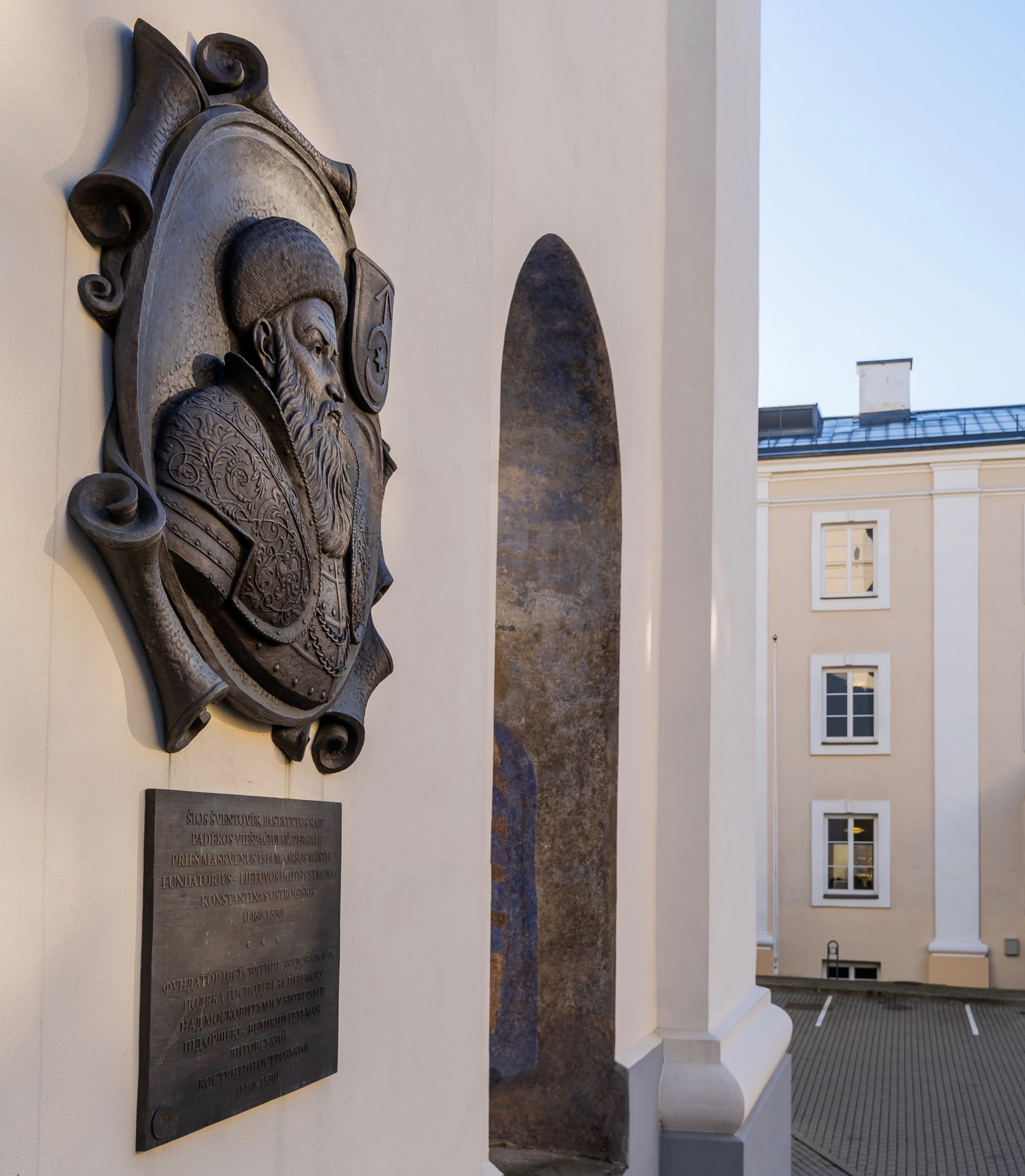Konstanty Ostrogski (approx. 1460–1530), Duke, Grand Hetman of the Grand Duchy of Lithuania (1497–1500, 1507–1530), Marshal of the Land of Volhynia (1507–1530), Castellan of Vilnius (1511–1522), and Voievod of Trakai (1522–1530), was one of the most influential political figures of the GDL in the first half of the 16th century [1]. The successful political career of this state figure happened during the rule of Kazymyr IV Jagiello (1440–1492) and his sons Alexander (1492–1506) and Sigismund I the Old (1506–1548). Sigismund, personally valuing the military skills and victories of the grand hetman, even dared to go around the legal limitations of the GDL, allowing an Orthodox to enter the ruling elite and become a member of the Lithuanian Council of Lords.
In the biography of the duke it is possible to distinguish a number of periods. At the early stage of his career, Vilnius occupied an important place, and more precisely, the court of the ruler in this city. Residing at the monarch’s court, more or less from 1486, Ostrogski took part in the work of the rulers’ courts and the Vilnius sejms. He became involved in various political matters of the GDL or the king’s family and had the opportunity to intercede for people close to him.1Raimonda Ragauskienė, “Konstantino Ostrogiškio karjera Aleksandro Jogailaičio dvare”, in: Kunigaikščiai Ostrogiškiai, Vilnius: Mokslo ir enciklopedijų leidybos centras, 2016, p. 25. In 1495, Ostrogski, together with other representatives of the elite of the GDL, accompanied the future ruler of the GDL, Grand Duchess of Moscow Elena, to Vilnius [2]. In 1497, he was appointed commander of the Lithuanian Army. Then the rapid progress in his career was interrupted by the battle of Vedrosha in 1500, when the duke suffered bitter defeat from the forces of the Grand Duchy of Moscow and even ended up a captive of the Muscovites.
Returning to the lands of the GDL in 1507, Ostrogski again became grand hetman. After that, he spent much time in battles with the Crimean Tatars and the Muscovites. He achieved a number of significant victories, which glorified his name in both Lithuania and Poland, and also through all Europe. The duke is credited with several dozen successful battles and only a few defeats: according to various historiographical data, he was “the winner of 64 battles” and only “six times knew defeat”, or, at least, “he led 33 battles, of which he lost only two”.2Władysław Pociecha, Królowa Bona, 1494–1557. Czasy i ludzie odrodzenia, t. 3, Poznań: Poznańskie Towarzystwo Przyjaciół Nauk, 1958, p. 94; Darius Baronas, “Konstantinas Ostrogiškis – vienas geriausių karvedžių”, Veidas, 2007, nr. 9.
The victory of 1514 near Orsha deserves separate attention [3, 4]. This battle is considered one of the largest in Central and Eastern Europe at the time. It was thoroughly described in the chronicles, reflected in fiction and literary works. In its historiography, they sometimes call it “the great battle” or “Grunwald in the East”, and it gained for Ostrogski the name “the Scipio of Rus or Lithuania”, comparing him to a noted Roman commander, victor over Hannibal and Carthage, Scipio Africanus.3Ludwik Kolankowski, Polska Jagiellonów: Dzieje polityczne, Olsztyn: Oficyna Warmińska, 1991, s. 129; Alfredas Bumblauskas, Genutė Kirkienė, “Ostrogiškiai tarp Vilniaus, Ostrogo ir Kijevo”, in: Kunigaikščiai Ostrogiškiai…, p. 8. Lithuania’s success in this battle is today explained by the novelty of a military tactic: an artillery ambush was used for the first time in history.4Oleg Dziarnovič, “1514 metų Oršos mūšis ir Konstantinas Ostrogiškis”, in: Kunigaikščiai Ostrogiškiai…, p. 76–77. After the battle, the thought was spread that Moscow could not be compared with Lithuania in the open field. This victory truly changed the course of the Lithuanian-Muscovite War: though Smolensk had recently been lost and could not be regained, the GDL then prevented the realization of the Muscovite policy “of gathering the Ruthenian lands”. For some time, a balance of forces was established between the GDL and Moscow. Yet another consequence of the victory near Orsha was that it, in a certain sense, consolidated the society of the Lithuanian state, becoming a subject of pride for both Catholics and Orthodox.
Success in battle also contributed to the resolution of other international questions. When news of it spread through Europe, Emperor Maximilian I of the Holy Roman Empire broke his alliance with Moscow, and in 1515 in Vienna he signed a peace treaty with Sigismund I the Old.5 V. Daugirdaitė-Sruogienė, “Kunigaikštis Konstantinas Ostrogiškis ir Oršos mūšis 1514 metais”, Karys, 1955, nr. 10, p. 294. This was an important precondition for the collapse of the coalition of Moscow and the Habsburgs against the Jagiellonians. A number of the more famous Muscovite prisoners were sent to the courts of the rulers of Europe (Budapest, Venice), in this way representing Poland and Lithuania as Europe’s outpost against “schismatics”.
Approximately 100 cities and 1 300 villages belonged to the duke,6Raimonda Ragauskienė, “Konstantino Ostrogiškio turtas ir religinė mecenatystė Lietuvoje”, in: Kunigaikščiai Ostrogiškiai…, p. 85. and in general they center around Ostrih in Volhynia. He also had a brick building in Vilnius. According to the census of the army of the GDL in 1528–1529, Ostrogski was among the top five wealthiest magnates of the duchy. (He provided 426 horses for military needs).7Литовская Метрика, отд. 1, ч. 3: Книги Публичных дел. Переписи Литовского войска (series: Русская историческая библиотека, т. 33), Петроград: Императорская Археографическая комиссия, 1915, кол. 8. A significant part of his wealth was composed of awards from the ruler for military victories and reimbursement for expenses during the war.
Many decisions regarding Ostrogski as a political figure were made in Vilnius. Here he began his career as the grand hetman of the GDL, soon receiving possession of the eldership of Bratslav, Vinnytsia, and Zvenigorod. Here he became castellan of Vilnius and, eventually, voievod of Trakai. For Ostrogski’s special military services, the ruler even changed the order of places in the Lithuanian Council of Lords and gave the grand hetman of the GDL first place among the laity (ahead of the voeivod of Vilnius) and the right to use a red wax seal. In the capital of the GDL, a conflict was also resolved that exploded between the nobles and the voievod of Vilnius, Albrecht Gashtold, in 1522, connected with a battle for power, political ambitions, and the future of the nation. At that time, Ostrogski tended toward a union with Poland, disapproving of ideas of greater independence for the GDL, which the magnates desired. However, the grand hetman’s position regarding union changed. When the political situation in the country stabilized, Ostrogski, probably, began to realize the growing significance of Lithuania in a personal union with Poland. For this reason, he swore allegiance to Sigismund II Augustus as the Grand Duke of Lithuania, and in 1529 took part in ceremonies on the occasion of his coronation in Vilnius. That year at the Vilnius sejm together with other nobles, the duke approved the First Lithuanian Statute, which, in particular, contained an article which forbid foreigners from buying land and holding positions in the GDL.
Ostrogski’s distinctiveness appeared in the worst moments of his life. In 1500, ending up in Muscovite captivity, he did not give in to the temptations of the leaders of a foreign country. Born in the Ruthenian lands, a descendant, like the Muscovite leaders, of those same Rurikoviches, an ardent Orthodox, the grand hetman more than all others would fill the role of “a gatherer of Ruthenian lands”. This did not tempt Ostrogski, however, and in 1507 he fled captivity, returning to the GDL, as if demonstrating which country was his true homeland. This choice of his was symbolic, expressively witnessing that the paths of Moscow and Kyivan Rus had separated. And the most important role in the history of their separation and the laying of the foundations of Belarus and Ukraine as independent historic players in the future went to the Grand Duchy of Lithuania and its capital city, Vilnius [5] (↑).
Genutė Kirkienė
Išnašos:
| 1. | ↑ | Raimonda Ragauskienė, “Konstantino Ostrogiškio karjera Aleksandro Jogailaičio dvare”, in: Kunigaikščiai Ostrogiškiai, Vilnius: Mokslo ir enciklopedijų leidybos centras, 2016, p. 25. |
|---|---|---|
| 2. | ↑ | Władysław Pociecha, Królowa Bona, 1494–1557. Czasy i ludzie odrodzenia, t. 3, Poznań: Poznańskie Towarzystwo Przyjaciół Nauk, 1958, p. 94; Darius Baronas, “Konstantinas Ostrogiškis – vienas geriausių karvedžių”, Veidas, 2007, nr. 9. |
| 3. | ↑ | Ludwik Kolankowski, Polska Jagiellonów: Dzieje polityczne, Olsztyn: Oficyna Warmińska, 1991, s. 129; Alfredas Bumblauskas, Genutė Kirkienė, “Ostrogiškiai tarp Vilniaus, Ostrogo ir Kijevo”, in: Kunigaikščiai Ostrogiškiai…, p. 8. |
| 4. | ↑ | Oleg Dziarnovič, “1514 metų Oršos mūšis ir Konstantinas Ostrogiškis”, in: Kunigaikščiai Ostrogiškiai…, p. 76–77. |
| 5. | ↑ | V. Daugirdaitė-Sruogienė, “Kunigaikštis Konstantinas Ostrogiškis ir Oršos mūšis 1514 metais”, Karys, 1955, nr. 10, p. 294. |
| 6. | ↑ | Raimonda Ragauskienė, “Konstantino Ostrogiškio turtas ir religinė mecenatystė Lietuvoje”, in: Kunigaikščiai Ostrogiškiai…, p. 85. |
| 7. | ↑ | Литовская Метрика, отд. 1, ч. 3: Книги Публичных дел. Переписи Литовского войска (series: Русская историческая библиотека, т. 33), Петроград: Императорская Археографическая комиссия, 1915, кол. 8. |
Sources of illustrations:
| 1. | Held in: НГМ РБ, КП44242. Published in: Український портрет XVI–XVIII століть, підг. Галина Бєлікова, Лариса Членова, Хмельницький: Галерея, Київ: Артанія Нова, 2006, с. 231–232 (іл. 239); „LDK portretų galerija“, in: Magnus Ducatus Lithuaniae, available at: www.mdl.projektas.vu.lt/thesaurus/idealiosios-kolekcijos/portretu-galerija/?nggpage=7, accessed: 2021 12 01. See also Микола Бендюк, „Портрети князя Костянтина Івановича Острозького: спроба атрибуції“, Острозька давнина, 2014, вип. 3, p. 21–35. |
| 2. | Лицевой летописный свод. Held in: Российская национальная библиотека (Санкт-Петербург), Отдел рукописей, F.IV.2321, l. 514. Published in: Лицевой летописный свод XVI века. Русская летописная история, кн. 17: 1483–1502 гг. [Шумиловский том], Москва: ООО фирма „АКТЕОН“, 2014, p. 280. |
| 3. | Held in: MNW, MP 2475 MNW (Available at: Cyfrowe zbiory Muzeum Narodowego w Warszawie, https://cyfrowe.mnw.art.pl/pl/katalog/517554, accessed: 2021 12 01). |
| 4. | Ibid. |
| 5. | Photographer Edgaras Kurauskas, 2021. Collection of VU IF. |
